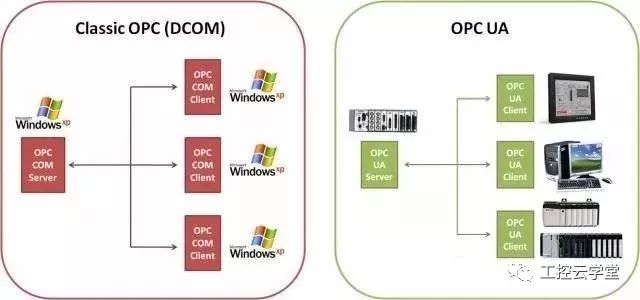Ten Reasons to Use OPC UA

Guide:
OPC UA
The OPC Unified Architecture (OPC UA) is a modern, secure, and vendor-neutral technology developed by the OPC Foundation. It enables seamless communication between manufacturing systems and enterprise resource planning (ERP) systems, allowing real-time data and processed information to be accessible to any authorized application or user, anywhere and anytime.
Unlike traditional OPC technologies, OPC UA is not limited to Windows environments. It supports multiple programming languages and operates across different operating systems, making it highly flexible and scalable. This independence allows for better integration with both legacy systems and new technologies, ensuring compatibility in diverse industrial settings.
One of the key advantages of OPC UA is its shift from the older DCOM-based architecture to a service-oriented approach (SOA). This change makes it more adaptable for connecting a wider range of devices, including embedded systems and IoT-enabled equipment, without relying on specific platform dependencies.
Today, OPC UA has become the standard bridge between enterprise-level computers and embedded automation components, independent of Microsoft, UNIX, or other operating systems. It provides a robust foundation for future-proof industrial communication.
The following are ten compelling reasons to adopt OPC UA:
1. Replacement of COM/DCOM Technology
Traditional OPC relied heavily on Microsoft's Component Object Model (COM) and its distributed version, DCOM. However, as Microsoft phased out COM in favor of the .NET framework, the foundation for traditional OPC became unstable. OPC UA was introduced as a modern alternative that eliminates these limitations and ensures long-term viability.
2. Limitations of DCOM
While DCOM offered powerful features like remote access and security mechanisms, it also introduced complexity in configuration. Proper setup required advanced knowledge, and many users opted for less secure configurations, leaving systems vulnerable. OPC UA simplifies this process while maintaining strong security protocols.
3. OPC Communication Through Firewalls
DCOM often required opening multiple ports, which posed significant security risks. OPC UA uses tunneling and web services to securely pass through firewalls, reducing exposure to potential threats while enabling reliable communication across networks.
4. Support for Non-Windows Platforms
Many industrial applications run on non-Windows systems such as Linux, Unix, or embedded OSes. Traditional OPC struggled with these platforms due to its reliance on DCOM. OPC UA removes this barrier, making it possible to integrate seamlessly with a wide range of operating systems.
5. Cross-Platform Communication via Web Services
With the introduction of OPC XML-DA, the foundation began supporting web-based communication. While this improved cross-platform compatibility, performance was still slower than DCOM. OPC UA builds on this concept, offering faster, more efficient communication while retaining the benefits of web services.
6. Unified Data Model
Traditional OPC had separate servers for data access, alarms, and historical data, requiring multiple requests to retrieve related information. OPC UA unifies these models into one, streamlining data retrieval and improving efficiency for developers and end-users alike.
7. Support for Complex Data Structures
Industrial devices often require handling complex data types. OPC UA introduces a standardized way to describe and exchange these structures, enhancing interoperability and reducing the need for custom configurations.
8. Reliable Data Transfer
In critical applications, data loss can have serious consequences. OPC UA ensures data integrity through features like automatic reconnection, caching, and redundancy, making it ideal for industries such as chemicals and petrochemicals where continuous monitoring is essential.
9. Enhanced Security Features
As automation and IT systems converge, the risk of cyber threats increases. OPC UA includes built-in security mechanisms, such as encryption and authentication, to protect against unauthorized access and ensure compliance with modern cybersecurity standards.
10. Support for Advanced Command Calls
Beyond simple data reading and writing, many applications require executing commands like starting a motor or downloading files. OPC UA defines a robust command interface, enabling more dynamic and interactive control over industrial systems.
Braided Sleeve,Braided Cable Sleeve,Expandable Braided Sleeving,Braided Wire Sleeve
Shenzhen Huiyunhai Tech.Co., Ltd. , https://www.cablesleevefactory.com